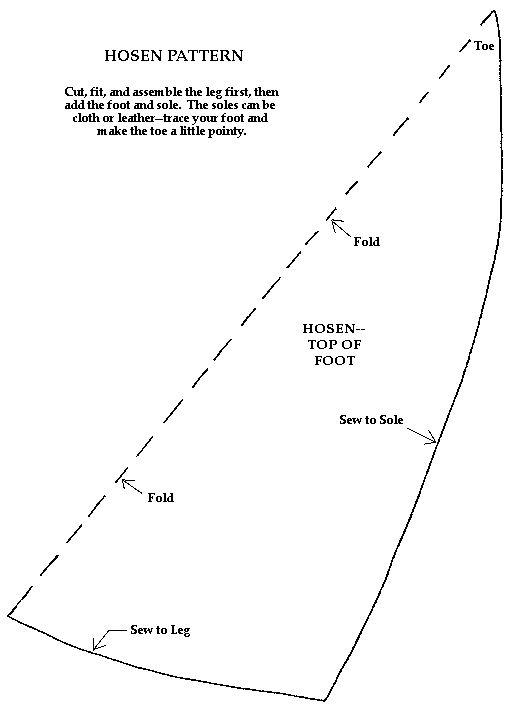
Start by making pattern pieces out of scrap fabric first, and fit them to your feet and ankles, making any necessary adjustments before cutting your good fabric. Be careful to leave the ankle large enough for your foot to go through, and remember that the long seam runs up the back of the leg.
Hosen were most frequently worn with just the ties to the braies supporting them, but you may wear simple garters below the knee, or crossgarters (at least 9 feet long each) for Hastings era or before. Garters and crossgarters can be from half an inch to about an inch wide. They can be simple leather strips, or fabric bands such as twill tape or something woven for the purpose by card-weaving or on an inkle loom.



